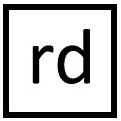As a professional photographer who employs a lot of technology in the creation of many of my images, I often get asked about what gear I use, and how I use it. Hopefully, this page will answer a few questions:
Camera Trapping:
I have been camera trapping since 1989, and have used just about every worldwide commercial trigger system that has existed in that time. I also designed and built my own laser triggers, with multiple inputs and outputs. Over the last ten years or so, I have consolidated all of my camera trapping around the entire line of Cognisys Inc.'s equipment. The quality and functionality of their gear is truly second to none, and I should know. It isn't the cheapest, but it will last you a lifetime, and the Customer Support from Cognisys is becoming legendary. From simple triggers to complete turnkey wireless systems for both stills and video, their stuff cannot be beaten.
There are other companies that provide gear with significantly less capability - Camtraptions is popular, for some reason. I know there are at least 30 photographers who started with Camtraptions gear, and migrated to Cognisys. (Zero the other way!) That should tell you all you need to know. Think of their gear as a cheap tripod - many beginners buy one, then buy a *proper* tripod when they quickly realize it doesn't do what they want. Now, Camtraptions are maestro marketeers - they run Camera Trapping Facebook groups anonymously, only posting images that were taken with their gear. I find that subversive and lacking in integrity. Enough said. Rest assured that all Cognisys gear is significantly superior - ease of use, ruggedness, portability, flexibility, functionality, quality and support. I can leave a Cognisys setup out in the field for 3 months, without the need for large auxiliary batteries, and have it operating just fine.
In terms of photographic gear for camera trapping, I use Canon 5DsR's for stills, and Sony A7S II's for video. Lenses for stills are either Canon or Sigma Art series, and lenses for video are generally Canon, mounted to the Sony cameras via a Sigma MC-11 adapter. A really important point to note is that lenses for camera trapping should have direct, manual focus capability. A lot of contemporary lenses are 'focus-by-wire' and/or STM (STepper Motor). Neither of these types are suitable, as when the camera goes to sleep, the lens resets its focus when the camera wakes up. It took years to figure all that out, and why things were always out of focus... If I am shooting nocturnal stills, I use either Cognisys flashes (absolutely incredible, but a bit spendy) or modified Nikon SB28's (much cheaper, but need a lot more maintaining in the field). For nocturnal video, I use the incredible Cognisys LED exclusively. They are phenomenal.
Hummingbirds in Flight:
I use all sorts of things for this, but my main go-to configuration is a Canon 5DsR and the Canon 100-400mm II lens. This is a very flexible and sharp combination, and enables me to get pretty close to the action. Occasionally, I will add a small extension tube to this combo to get closer focusing, but not often. I think the Canon 100-400mm II lens is easily the best value lens in the entire Canon lineup. I have a tall carbon fibre tripod, a Wimberly II gimbal head and for flashes I use Paul C. Buff Einsteins when at home, and simple, cheap Speedlites when out in the field. Those who know my history know that I ran a company 'Fotronix' long ago that designed and produced some high speed flashes specifically for photographing hummingbirds. There are still folks out there using them, however the introduction of the IGBT (Insulated Gate Bipolar Transistor) rendered the Fotronix flashes obsolete, and most modern flash systems now can create very short duration flash pulses with useable output levels. Couple that with the always improving ISO performance of digital image sensors and you can shoot hummingbirds in flight with very standard, off-the-shelf flash equipment.
Studio:
Again, Canon 5DsR and a range of lenses, however the fairly recent Canon 85mm f1.4 is my fave. WAY faster and more accurate focusing than the 85mm f1.2 II, an slightly more forgiving. Flashes are usually Paul C. Buff Einsteins, though I do shoot with Speedlites too. A lot of studio photographers shoot 'tethered' to a laptop - for instant image download and to be able to see things on a large screen. I have tried this on several occasions, but have always found it a hindrance to flow, continuity, movement and spontaneity, so I don't tend to do it. Sometimes I shoot with a Canon 1Dx II as well, especially in low light situations.
